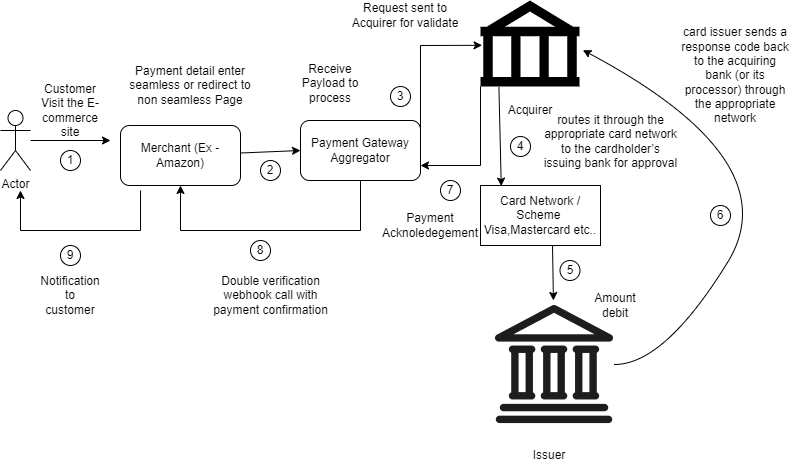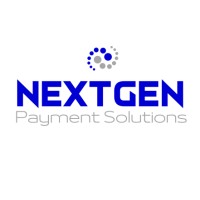By Nuzat Sayyed
In today’s rapidly changing technology environment, amidst this dynamic scene, the realm of financial deals has evolved beyond simple transfers from one account to another. Moreover, with the advent of innovative payment gateways, these transactions have taken on a new dimension With the introduction of New payment gateways, the way we conduct financial exchanges has been transformed.
Leading the charge in changing the financial industry, these advanced payment gateways offer solutions that rise above the realms of smoothness, security, and ease. In fact, furthermore, their planned placement places them in a pivotal role, thus directly shaping the path of future financial deals. This article delves into the exciting new ideas that are driving this change through advanced payment entrances.

1. Introduction
Financial transactions are undergoing a paradigm shift, driven by breakthrough innovations in payment gateways. These technological advances will redefine the way we conduct monetary transactions, providing greater security, speed, and convenience.
2. Rise of next-gen payment gateways
Next-gen payment gateways are on the rise in the financial industry. Moreover, the inclusion of cutting-edge features like biometric authentication and AI-driven fraud detection elevates these gateways to a level beyond mere functionality. Not only do they offer a secure and efficient method for transactions, but they also usher in an innovative and forward-looking approach to how transactions are carried out.
3. Improved security and fraud prevention
The future of financial transactions lies in enhanced security measures. In fact, it’s noteworthy that next-generation payment gateways have embraced an arsenal of security measures. These include multi-factor authentication, biometrics, and AI algorithms, all aimed at guaranteeing the utmost levels of security. Such comprehensive measures are strategically designed to effectively shield sensitive financial data from the omnipresent realm of cyber threats.
4. Seamless user experience
User experience stands as a pivotal factor in the development of payment gateways. In fact, these innovations have been meticulously crafted to yield a seamless and user-friendly interface. This deliberate design approach not only diminishes transaction friction but also culminates in elevated customer satisfaction.
5. Cryptocurrency integration
The integration of cryptocurrencies into payment gateways introduces a realm of exciting new possibilities. Specifically, this integration holds immense promise as it works to nurture cross-border transactions and advance the goal of heightened financial inclusion. This monumental development is set to revolutionize cross-border payments, introducing a transformative wave in the landscape of international trade.
6. Biometric authentication
Biometric authentication, which includes fingerprint and facial recognition, is poised to replace conventional PINs and passwords. This transition not only leads to the streamlining of the payment process but also considerably enhances security, introducing an additional layer of protection.
7. Artificial intelligence and machine learning
Artificial intelligence and machine learning algorithms play a crucial role in enabling payment gateways to detect anomalies, predict fraudulent activity, and even offer personalized financial insights to users. This infusion of advanced technology not only heightens transaction security but also enhances overall efficiency in the payment process.
8. Contactless payments
Contactless payments have witnessed a significant surge in popularity, especially in the aftermath of the COVID-19 pandemic. Moreover, it’s worth noting that next-generation payment gateways have prominently positioned themselves at the forefront of this trend. These gateways offer a diverse array of convenient and hygienic payment options, effectively catering to the evolving preferences and needs of users.
9. IoT-powered transactions
The Internet of Things[1] (IoT) is expanding its influence on financial transactions. Smart devices can now trigger payments on their own, creating a seamless and connected ecosystem.
10. Cross-border transactions
Cross-border transactions have historically presented complexities and incurred high costs.
Nevertheless, it is through the strategic utilization of technology that next-generation[2] payment gateways gain the capability to efficiently streamline and expedite these transactions. Consequently, this remarkable technological advancement assumes a pivotal role in propelling global trade forward and fostering sustainable economic growth.

11. Environmentally sustainable approaches
Environmental sustainability is increasingly becoming a focal point within the fintech[3] sector [3]. Moreover, next-generation payment gateways are spearheading this movement by adopting environmentally friendly practices. These practices effectively minimize the environmental footprint associated with conventional banking processes, demonstrating a commitment to both innovation and eco-consciousness.
12. Regulatory and compliance challenges
As payment gateways continue their evolution, it’s important to recognize that regulatory challenges are also evolving in tandem. The task of striking a harmonious balance between innovation and regulatory compliance stands as a significant concern. This necessitates a collaborative effort between fintech companies and regulatory bodies to ensure that advancements are made within the boundaries of established rules and regulations.
13. The role of large technology companies
Large technology companies are making their foray into the payment gateway arena, capitalizing on their substantial user base to reshape the landscape of financial transactions[4]. This significant shift not only introduces fresh opportunities but also prompts valid concerns related to privacy and the dynamics of market competition.
14. Blockchain in payment gateways
Blockchain technology is currently in the process of revolutionizing traditional payment gateways by providing an unprecedented combination of transparency, security, and efficiency. Furthermore, its inherently decentralized nature holds immense potential to fundamentally reshape the very way transactions are handled and verified.
15. Conclusion
The future of financial transactions is in the midst of a significant transformation owing to the remarkable innovations introduced by next-generation payment gateways. These groundbreaking advances, encompassing heightened security measures, seamless user experiences, and cryptocurrency integration, are collectively laying the foundation for a financial landscape that not only prioritizes security and efficiency but also embraces inclusivity and adaptability.
FAQs
1. How do next-generation payment gateways ensure security?
Next-generation payment gateways utilize an array of advanced techniques, including multi-factor authentication, biometric recognition, and AI-driven fraud detection. These measures collectively work to establish the utmost level of security for financial transactions, reassuring users and fortifying the integrity of the process.
2. Can I use cryptocurrencies for everyday transactions?
Indeed, the integration of cryptocurrencies into payment gateways is facilitating their practical use for everyday transactions. This trend not only opens up new possibilities but also brings with it tangible advantages, including reduced fees and expedited cross-border payments.
3. What are the benefits of biometric authentication in payments?
Biometric authentication plays a pivotal role in augmenting security by utilizing distinctive physical attributes for verification. This approach effectively heightens protection, making it considerably more challenging for unauthorized individuals to gain access to your financial accounts.
4. How does artificial intelligence contribute to payment processing?
Artificial intelligence brings a transformative capability to payment gateways, allowing them to meticulously analyze transaction patterns, swiftly identify potential instances of fraud, and even deliver tailored financial insights. This integration not only enhances transactional security but also significantly bolsters overall efficiency.
5. Are IoT-powered transactions vulnerable to hacking?
While IoT-powered transactions indeed offer remarkable convenience, it’s crucial to recognize the existence of potential security risks associated with the hacking of interconnected devices. However, it’s reassuring to observe that diligent endeavors are underway to establish robust security measures capable of effectively mitigating these risks.





